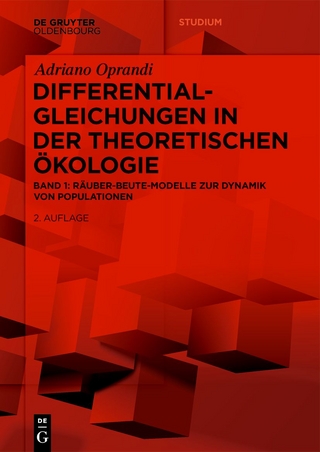
A Tour of Subriemannian Geometries, Their Geodesics and Applications
Seiten
2002
American Mathematical Society (Verlag)
978-0-8218-1391-1 (ISBN)
American Mathematical Society (Verlag)
978-0-8218-1391-1 (ISBN)
- Titel ist leider vergriffen;
keine Neuauflage - Artikel merken
This text is devoted to the study of sub-Riemannian geometries, their geodesics, and their applications. It starts with the simplest nontrivial example of a subriemannian geometry: the two-dimensional isoperimetric problem reformulated as a problem of finding sub-Riemannian geodesics.
Subriemannian geometries, also known as Carnot-Caratheodory geometries, can be viewed as limits of Riemannian geometries. They also arise in physical phenomenon involving "geometric phases" or holonomy. Very roughly speaking, a subriemannian geometry consists of a manifold endowed with a distribution (meaning a $k$-plane field, or subbundle of the tangent bundle), called horizontal together with an inner product on that distribution. If $k=n$, the dimension of the manifold, we get the usual Riemannian geometry. Given a subriemannian geometry, we can define the distance between two points just as in the Riemannin case, except we are only allowed to travel along the horizontal lines between two points. The book is devoted to the study of subriemannian geometries, their geodesics, and their applications. It starts with the simplest nontrivial example of a subriemannian geometry: the two-dimensional isoperimetric problem reformulated as a problem of finding subriemannian geodesics.
Among topics discussed in other chapters of the first part of the book we mention an elementary exposition of Gromov's surprising idea to use subriemannian geometry for proving a theorem in discrete group theory and Cartan's method of equivalence applied to the problem of understanding invariants (diffeomorphism types) of distributions. There is also a chapter devoted to open problems. The second part of the book is devoted to applications of subriemannian geometry. In particular, the author describes in detail the following four physical problems: Berry's phase in quantum mechanics, the problem of a falling cat righting herself, that of a microorganism swimming, and a phase problem arising in the $N$-body problem. He shows that all these problems can be studied using the same underlying type of subriemannian geometry: that of a principal bundle endowed with $G$-invariant metrics. Reading the book requires introductory knowledge of differential geometry, and it can serve as a good introduction to this new exciting area of mathematics.
Subriemannian geometries, also known as Carnot-Caratheodory geometries, can be viewed as limits of Riemannian geometries. They also arise in physical phenomenon involving "geometric phases" or holonomy. Very roughly speaking, a subriemannian geometry consists of a manifold endowed with a distribution (meaning a $k$-plane field, or subbundle of the tangent bundle), called horizontal together with an inner product on that distribution. If $k=n$, the dimension of the manifold, we get the usual Riemannian geometry. Given a subriemannian geometry, we can define the distance between two points just as in the Riemannin case, except we are only allowed to travel along the horizontal lines between two points. The book is devoted to the study of subriemannian geometries, their geodesics, and their applications. It starts with the simplest nontrivial example of a subriemannian geometry: the two-dimensional isoperimetric problem reformulated as a problem of finding subriemannian geodesics.
Among topics discussed in other chapters of the first part of the book we mention an elementary exposition of Gromov's surprising idea to use subriemannian geometry for proving a theorem in discrete group theory and Cartan's method of equivalence applied to the problem of understanding invariants (diffeomorphism types) of distributions. There is also a chapter devoted to open problems. The second part of the book is devoted to applications of subriemannian geometry. In particular, the author describes in detail the following four physical problems: Berry's phase in quantum mechanics, the problem of a falling cat righting herself, that of a microorganism swimming, and a phase problem arising in the $N$-body problem. He shows that all these problems can be studied using the same underlying type of subriemannian geometry: that of a principal bundle endowed with $G$-invariant metrics. Reading the book requires introductory knowledge of differential geometry, and it can serve as a good introduction to this new exciting area of mathematics.
Chow's theorem: Getting from A to B; A remarkable horizontal curve; Curvature and nilpotentization; Singular curves and geodesics; A zoo of distributions; Cartan's approach; The tangent cone and Carnot groups; Discrete groups tending to Carnot geometries; Open problems; Classical particles in Yang-Mills fields; Quantum phases; Falling, swimming, and orbiting; Bundles and the Hopf fibration; The Sussmann and Ambrose-Singer theorems; Calculus of the endpoint map and existence of geodesics; Bibliography; Index
| Erscheint lt. Verlag | 14.2.2002 |
|---|---|
| Reihe/Serie | Mathematical Surveys and Monographs ; No. 91 |
| Zusatzinfo | bibliography, index |
| Verlagsort | Providence |
| Sprache | englisch |
| Gewicht | 735 g |
| Themenwelt | Mathematik / Informatik ► Mathematik ► Analysis |
| Mathematik / Informatik ► Mathematik ► Geometrie / Topologie | |
| Mathematik / Informatik ► Mathematik ► Graphentheorie | |
| ISBN-10 | 0-8218-1391-9 / 0821813919 |
| ISBN-13 | 978-0-8218-1391-1 / 9780821813911 |
| Zustand | Neuware |
| Haben Sie eine Frage zum Produkt? |
Mehr entdecken
aus dem Bereich
aus dem Bereich
Buch | Softcover (2024)
De Gruyter Oldenbourg (Verlag)
59,95 €
Buch | Softcover (2024)
De Gruyter Oldenbourg (Verlag)
59,95 €


